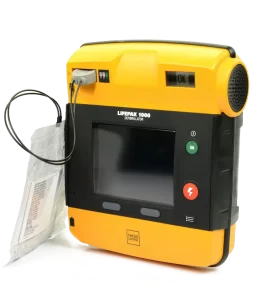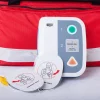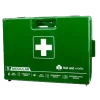
Recent Post
 Could You Recognise the Signs That Someone Needs a Defibrillator?
Could You Recognise the Signs That Someone Needs a Defibrillator?
September 12, 2023
Introduction:
A defibrillator, also known as an ICD or implantable cardioverter defibrillator, is a small electronic device that is inserted into the chest to continuously monitor the heart’s rhythms.
A Sunbury defibrillator can send electrical impulses that shock the heart, restoring normal rhythm, when the heart begins to beat dangerously and abnormally quickly (arrhythmia). A defibrillator is always ready to save a life and is always on standby.
If you have a heartbeat that is hyperactive or irregular in a ventricle—a blood-pumping chamber in the heart—defibrillators are usually recommended. A condition known as ventricular tachycardia occurs when a ventricle pumps too quickly. Known as ventricular fibrillation, the condition occurs when a ventricle twitches or flutters erratically. Both conditions can result in sudden death.
Patients who have previously experienced an irregular, rapid heartbeat that has resulted in fainting or sudden cardiac arrest should consider getting a defibrillator implant.
Now we’re going to look at how to put your AED cabinet in place. After drilling the first hole, insert the wall plug and a bolt into the top right-hand hole for now. While you then mark out the remaining holes, a little tightening will assist in supporting the cabinet’s weight. After positioning your Spirit level on the top of the cabinet and moving it until it is perfectly level, mark the remaining three positions for drilling through the cabinet’s back holes. Take the cabinet down and carefully set it on the floor after removing the first bolt.
Moving on:
Drilling the remaining three holes is the next step. These must penetrate a depth long enough to accommodate the entire bolt in the fixing pack. You will need someone to assist you during the following section. Insert the wall plugs by gently tapping them in with a hammer until they are flush with the wall after you have drilled and cleaned all four holes.
After that, you’ll need a helper to hold the cabinet and place it in the holes you’ve drilled. Take your bolts and put them through the steel washer first, then the small nylon washer, into the holes in the cabinet’s back, and finally into the wall plug in a place where you drilled your holes before. We suggest the utilization of huge spaces in the event that you are mounting your bureau on a lopsided surface.
You are able to begin tightening the four bolts once they are all in place. Never completely tighten any bolt. Make four or five turns on each bolt in a clockwise direction until the cabinet is securely fastened to the wall. Do not overtighten these bolts because doing so could cause the cabinet to sag and make it hard to close the door.
You will need to decide where your electrical supply will enter the cabinet after drilling and plugging the four holes. Even though the unit comes with the plug, we still suggest that it be hardwired. The gland at the cabinet’s bottom serves as a guide for the electrical supply’s entry point. Under no circumstances are you to penetrate further openings in the bureau to attempt to permit more straightforward access for power. This will result in water ingress and void the warranty.
After Installation Your AED Cabinet
After connecting your AED cabinet to the electrical supply and installing it, A watertight seal is formed around the cable a result. The heater will not automatically turn on when the power supply is connected unless the temperature drops below eight degrees, which has been tested in the factory prior to shipment. Insert the batteries if your cabinet comes with a magnetic light. After that, connect the magnetic light to the cabinet’s inner front. This light is a movement sensor meaning it will turn on when the entryway is opened.
- The door will frequently be difficult to open and close for the first four weeks after the cabinet is operational. This is because the silicone gasket inside the door requires some time to get used to. To unlock the door during this time, you may need to press very hard. But don’t slam the door shut.
- A free online video course on how to install an AED cabinet is available from ProTrainings.
- You must make routine follow-up visits to the electrophysiologist following surgery. Within six weeks of the device’s implantation, the first appointment is scheduled.
During each visit, a programmer device will check the Sunbury defibrillator and show:
- whether or not the defibrillator functions properly.
- Present circumstances
- whether it has sent the heart signals that are right.
- how much power is still in the battery?
- The defibrillator’s leads additionally might be checked. Additionally, programming adjustments are possible.
A Sunbury defibrillator’s battery can last anywhere from three to eight years, depending on how much electrical shock it delivers. A new ICD will be inserted when the battery’s voltage drops too low. However, it is highly unlikely that the leads of the defibrillator will be replaced.
The use of a defibrillator is one component of a more comprehensive treatment plan that may also include the consumption of nutritious food, moderate physical activity, and healthy lifestyle choices.






